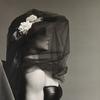Bringing to Light One of America's Earliest Impressionists
- BOSTON, Massachusetts
- /
- December 05, 2019
In the sphere of American Impressionism there is perhaps no artist more overdue for attention than Theodore Wendel (1857-1932), which is why Vose Galleries is thrilled to extend the exhibition of his work in Boston through January 25th, 2020. Bringing to Light: Theodore Wendel includes over thirty paintings, the majority of which have descended through the artist's family and have never been offered for sale before, and is the first exhibition in decades in which the merit of Wendel’s Impressionism can be observed and appreciated.
As part of the first wave of Americans to visit Giverny in the summer of 1887, joining John Leslie Breck, Willard Metcalf and Theodore Robinson, Wendel became one of the earliest painters to apply impressionist principles to his plein air interpretations of the French countryside. Sources reported that the master himself, Claude Monet, who limited his interactions with the Americans, thought very highly of Wendel’s work, and Lilla Cabot Perry, a later artist resident of Giverny, heard Monet say that Wendel was, "the only American painter whose work interested him."(1) Those on both sides of the Atlantic admired his work - upon Wendel's return home, artists and critics lauded his paint handling and intuitive color harmonies, and were charmed by his unique brand of Impressionism as it applied to the clearer sunlight and rich tapestry of the New England landscape, and especially, Ipswich, Massachusetts, which would serve as the artist’s home and personal version of Giverny for the majority of his career.
Wendel initially maintained an active exhibition schedule, with shows at the Cincinnati Art Museum, the Corcoran Gallery, the Pennsylvania Academy of the Fine Arts, the Society of American Artists, and the National Academy of Design, which awarded him the prestigious Jennie Sesnan Gold Prize for Winter at Ipswich in 1908 and acquired the painting for their permanent collection. He was widely respected and beloved by the greater Boston artist community, and Edmund Tarbell commented in 1909, “I know of no landscape painter whose work represents so many of the effects of nature…or who can put down what he sees with greater truthfulness.”(2) Despite such professional triumph, however, Wendel never quite attained the same level of name recognition bestowed on his impressionist peers, particularly those who had established strong ties to New York City. Years later, Wendel and several Boston painters were overlooked by the National Academy when conferring associate memberships, causing Philip Leslie Hale to counter: “there is not a better painter of landscape in America than Theodore Wendel, and yet one sees pitiful fakers succeeding in a material way where he only scores ‘un success d’estime.’” (3)
Wendel’s inherent modesty may have played a role in his relative obscurity, an opinion best surmised by his friend Frank Benson in a letter upon hearing of the artist’s death: “He was really a true artist, and a very fine one, only he did not know what it meant to make his candle shine in the world.” (4) Wendel was the embodiment of the painter’s painter; he prefered working steadily among the picturesque environs of the North Shore than catering to the press or procuring exhibitions of his work. Furthermore, the artist suffered and eventually recovered from an infection of the jaw in 1917, after which his output was markedly curtailed until his death in 1932. This, combined with a studio fire at the turn of the century in which a collection of early landscapes may have been lost, leads to a scarcity of paintings on the market from which one can grasp the true breadth of Wendel’s talent.
Wendel's work was tucked away after his death in 1932 until 1976, when the Whitney Museum organized the exhibition, Introducing Theodore Wendel. The exhibition, coordinated by the artist’s son Daniel and John I. H. Baur, director emeritus, reintroduced Wendel to the art world, and served as the first step toward establishing Wendel’s status as one of the leading American Impressionists. The crusade for Wendel’s legacy was furthered this year with the publication of The Artist Book Foundation and Laurene Buckley’s monograph on the artist, Theodore Wendel: True Notes of American Impressionism, for which Vose Galleries was pleased to hold a book signing this past spring. Vose Galleries is excited by the opportunity to continue to bolster Wendel’s renown with Bringing to Light: Theodore Wendel, now viewable online and in the gallery through January 25th, 2020.
- R. H. Ives Gammell, The Boston Painters: 1900-1930 (Orleans, MA: Parnassus Imprints, 1986), 152.
- “Honors and Praise for Mr. Wendel,” Boston Evening Transcript, January 30, 1909, 5.
- “New Associates of National Academy,” Boston Herald, June 7, 1908, 1.
- Letter dated December 25, 1932. Wendel Family Archives.
238 Newbury Street
Boston, Massachusetts
info@vosegalleries.com
617-536-6176
http://www.vosegalleries.com

100x100_c.jpg)






![Peter Paul Rubens (Flemish, 1577–1640), After Titian (Tiziano Vecelli) (Italian [Venetian], c. 1488–1576), Rape of Europa, 1628–29. Oil on canvas, 71 7/8 x 79 3/8 in. Peter Paul Rubens (Flemish, 1577–1640), After Titian (Tiziano Vecelli) (Italian [Venetian], c. 1488–1576), Rape of Europa, 1628–29. Oil on canvas, 71 7/8 x 79 3/8 in.](/images/c/e2/2e/Jan20_Rape_of_Europa100x100_c.jpg)







